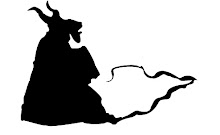
Imagine it is 1927 and you are German. The First World War is over, Hitler is more than a decade away, your country is making the best films in the world, and guys named Gustav are still getting laid freely. The century is just out of puberty and life is seemly good. But, like all twenty-seven-year-olds, this new century is part party animal and part angst-ridden heap on insecurity. The pastoral European countryside that your ancestors had tilled and plowed for a thousand years is becoming increasingly pock marked with grey, windowless leviathans called factories which seem to do nothing but inhale the working class and exhale smog. The future that they told us about at the end of the 1800’s is approaching in fast and as it gets closer we realize that Jules Verne was only half right. Technology is only captivating to those on the receiving end of it. The men behind the machines sacrifice limbs, eyes, lungs, and lives to keep them running and as industry grows larger the machines grow hungrier. But you can’t fight the future and progress is still progress, even if a few million people get tuberculosis in the process. So how does a country cope? Well, if you’re German (actually, especially if you’re German) the answer is, of course, expressionist cinema.
There has been nothing about “Metropolis” that can be said that hasn’t already been said by every single film professor ever for the last sixty years. But, achtung! Lost reels have been discovered hidden inside an Argentinean film vault and now the Film Forum in New York City is selling tickets. Minus five or so minutes of the film that was permanently destroyed “Metropolis” is now back to its complete two and half hour form. It’s wrongfully assumed that the uncut version is always the best one. Film historians would have you believe that the film was censored, another example of government spitting in the face of true art, but the reality is that only a few subplots and extended shots were cut for time. Nothing new is really gained from the additional forty-five minutes aside from the knowledge that the world’s collective attention span was much longer back then. Despite the new version dragging in some points the classic film is, of course, still there in all its art deco glory. The new footage does not dethrone Dr. Rotwang’s machine-woman as the film’s most iconic image. She is the ultimate metaphor for the film; humans becoming machines in service of the greater machine. I also like to refer to her as C-3PO’s hot mom.
The film, thought often labeled as “political”, is neither liberal nor conservative. Rather than warning of the dystopian future we are wrenching and ratcheting our way towards it resigns us to inevitability. Mother Nature, the Fatherland, and along with it the old life, had already died twenty years before the film was made. But in the bleakness of this ironclad future the director, Fritz Lang, offers hope. The old ways are long gone but humanity will find a new way, evil robots be damned!
© 2010 Dan Howard.
All rights reserved.
Work cannot be reproduced for any reason without consent of Dan Howard.



No comments:
Post a Comment